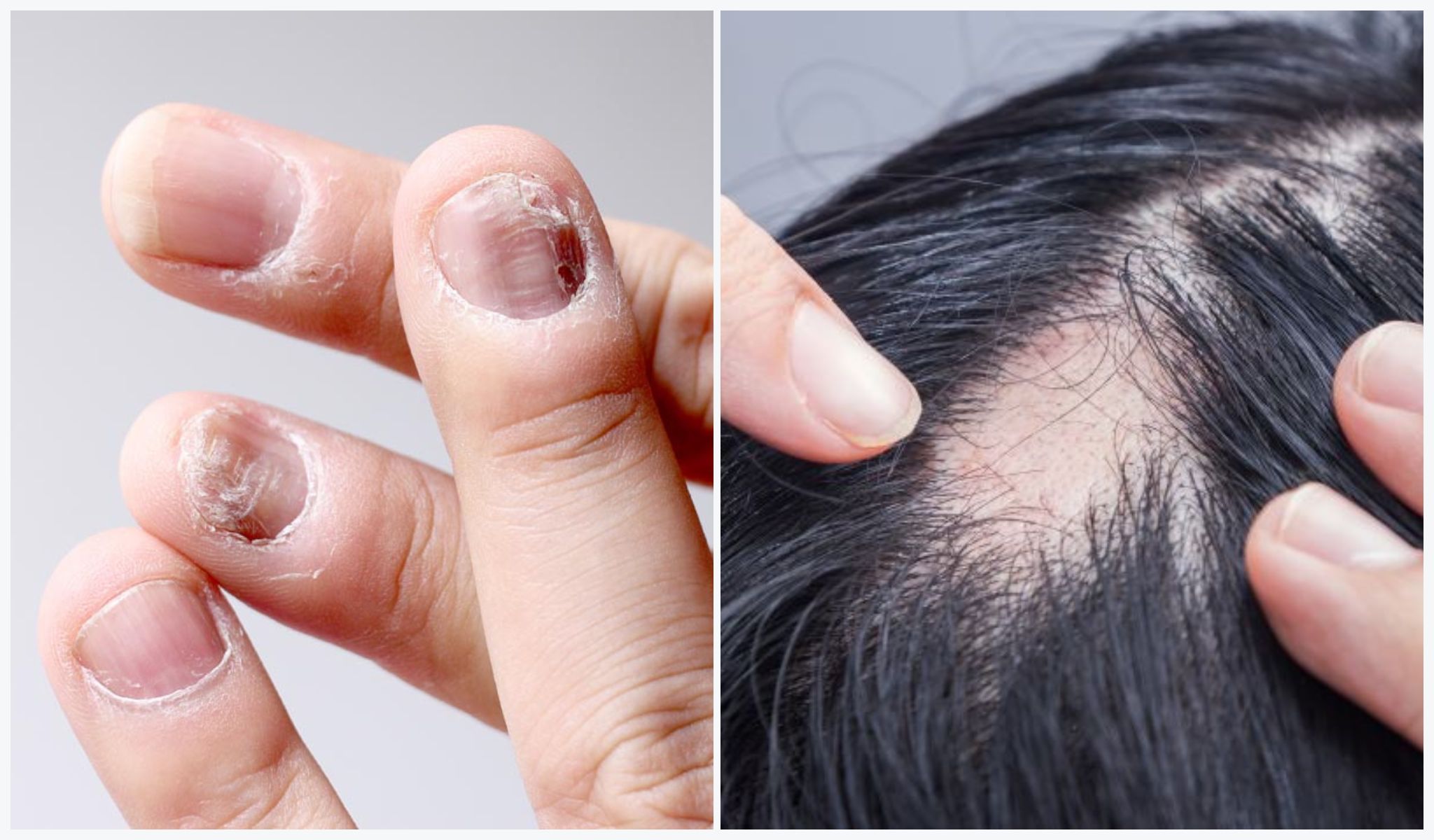Hair and Nail Diseases

Types of Hair Diseases
Hair diseases are medical conditions that affect the hair follicles, scalp, and sometimes the entire hair structure. These conditions can result in various hair-related issues, including hair loss, thinning, breakage, and changes in hair texture or color. There are numerous hair diseases, each with its own causes, symptoms, and treatments. Some common hair diseases include:
- Alopecia Areata: This autoimmune disease causes hair loss in small, round patches on the scalp or other areas of the body.
- Androgenetic Alopecia: Also known as male or female pattern baldness, this is a genetic condition that leads to gradual hair thinning and hair loss.
- Telogen Effluvium: This condition is characterized by excessive hair shedding caused by factors like stress, illness, medication, or hormonal changes.
- Trichotillomania: A psychological disorder where individuals have an irresistible urge to pull out their hair, resulting in hair loss.
Tinea Capitis: A fungal infection of the scalp that can lead to hair loss, itching, and scaling. - Scalp Psoriasis: Psoriasis is a chronic skin condition that can affect the scalp, causing red, scaly patches and potentially leading to hair loss.
- Cicatricial (Scarring) Alopecia: In this condition, inflammation and scarring damage the hair follicles, leading to permanent hair loss.
- Traction Alopecia: This is hair loss caused by constant pulling or tension on the hair, often due to tight hairstyles like braids, ponytails, or extensions.
- Alopecia Universalis: A severe form of alopecia areata where hair loss occurs all over the body, including the scalp and eyebrows.
- Congenital Hair Shaft Disorders: These are genetic conditions that affect the hair shaft’s structure, leading to brittle, fragile hair that can break easily.
- Folliculitis: Inflammation or infection of the hair follicles, which can cause hair loss and painful, pus-filled bumps on the scalp.
- Trikonodysplasia: A rare genetic disorder that results in twisted or knotted hair shafts.
Diagnosis and treatment of hair diseases depend on the specific condition and its underlying causes. It’s essential to consult a dermatologist for a proper diagnosis and treatment plan.
What are common Nail Diseases?
Nail diseases, also known as onychopathies, are medical conditions that affect the nails, which are the hard, protective coverings on the fingers and toes. These conditions can result in various nail abnormalities, including changes in color, texture, shape, thickness, and overall appearance. There are numerous nail diseases, each with its own causes, symptoms, and treatments. Some common nail diseases include:
- Fungal Nail Infections (Onychomycosis)
- Ingrown Toenails (Onychocryptosis)
- Nail Trauma
- Paronychia
- Nail Lichen Planus
- Nail Psoriasis
- Overgrown Nails (Onychogryphosis)
- Nail Melanoma
- Nail Biting (Onychophagia)
Some nail diseases may require topical treatments, medications, surgical procedures, or lifestyle changes. It’s essential to consult a dermatologist, if you suspect you have a nail disease or are experiencing nail-related problems, as early diagnosis and appropriate management are crucial for maintaining nail health.
